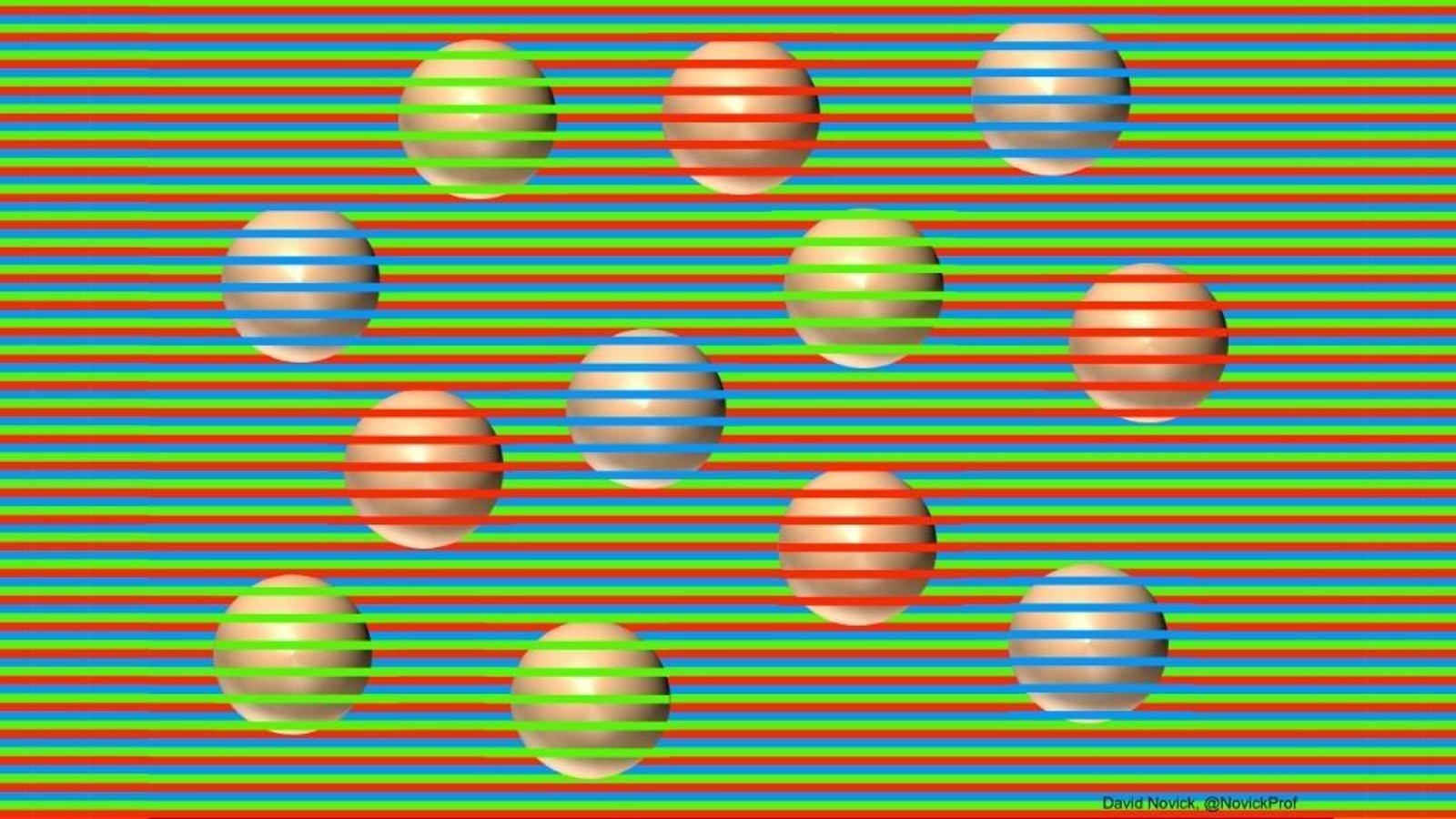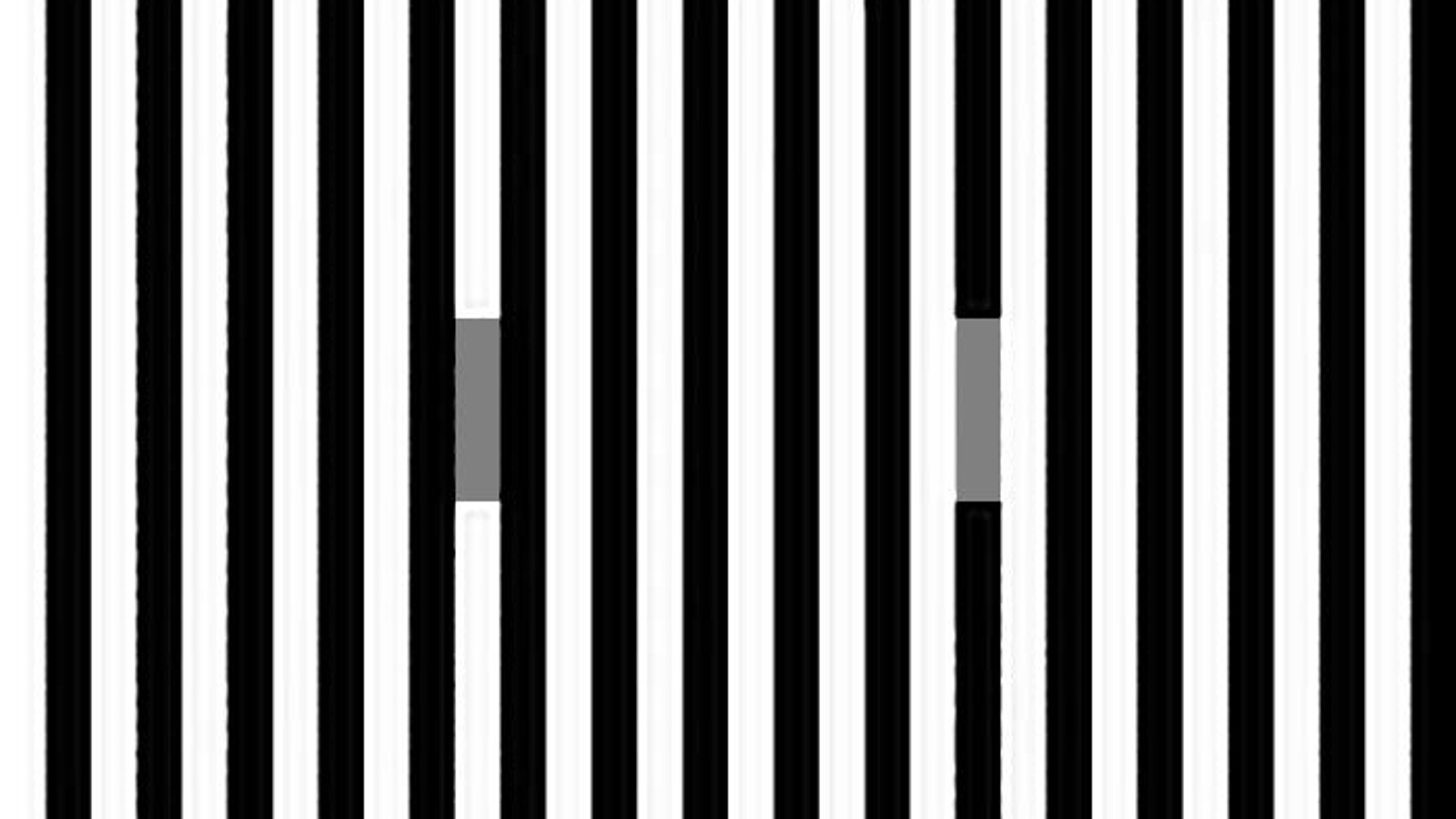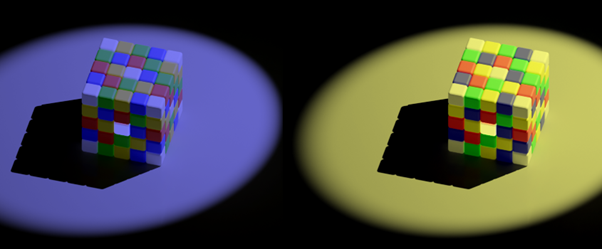The brain-bending secret behind hundreds of optical illusions has finally been revealed
"Simultaneous contrast illusions" rely on altering the backgrounds of images to change how we perceive the colors and brightness of objects within them. Now, a computer model may have revealed exactly how they fool us.

Scientists armed with a new computer model have taken a step closer to unlocking the mind-bending secrets of optical illusions that trick the brain into seeing the wrong colors when it's processing images.
"Simultaneous contrast illusions" are a wide-ranging group of deceptive illustrations that trick people into thinking specific parts of an image are different colors from one another, when in reality, they're the same color. The effect rests on the illustrator altering the brightness or color in the background, in order to alter our perception of objects in the foreground. For example, in the image above, the smaller bar in the middle of the image is a single gray color but appears to be a gradient of varying shades because the background is brighter at one end and darker at the other. Another example is the Munker-White illusion, displayed in the image below, in which 12 spheres appear red, purple and green but are actually the same shade of beige.
Scientists have broadly known why these illusions work for more than a century, but in all that time, experts haven't been able to agree on exactly how they trick the brain. There are two possible explanations. The first is that the illusion is created from the bottom up, starting with low-level neural activity that requires no previous exposure to this type of illusion. The second is top-down, meaning it requires higher brain functions and plays off what your brain has previously learned about the brightness and color of light over time.
In a new study, published June 15 in the journal Computational Biology, a pair of researchers used a new computer model that mimics human vision to try to settle the debate once and for all.
Related: A new type of optical illusion tricks the brain into seeing dazzling rays

The model, known as the "spatiochromatic bandwidth limited model," uses computer code to mimic how the network of brain cells, or neurons, that first receive data from the eyes starts to decipher an image before that data is sent to other, "higher-level" regions of the brain to be fully processed. The model breaks down the image into sections, measures each section's brightness and then coalesces those assessments into a single report that can be sent to the brain, similar to what happens with human vision.
The beauty of this model is that the code allows the individual sections to be processed only at the same speed as human neurons could feasibly assess them, so the model is restricted to match our own visual limitations, study co-author Jolyon Troscianko, a visual ecologist at the University of Exeter in the U.K., told Live Science. "This aspect of the model is particularly novel — no one seems to have considered the effect that limited bandwidth might have on visual processing," he added. Specifically, the new model takes into account how quickly neurons can "fire," or shoot a message to other neurons in their network.
Sign up for the Live Science daily newsletter now
Get the world’s most fascinating discoveries delivered straight to your inbox.

The researchers used their new model to analyze more than 50 simultaneous contrast illusions to see if the program would also mistakenly identify specific parts of the images as being different colors, as a human being would. (It is unclear exactly how many simultaneous contrast illusions exist, but there are likely hundreds, the report authors noted.)
During these experiments, the model was consistently fooled into identifying the wrong colors, Troscianko said. "My collaborator [Daniel Osorio] kept emailing me new illusions, saying that he didn't think it would work with this one," he added. "But to our surprise and delight, it generally predicted the illusion in almost all cases."

Because the model is also "tricked" by these illusions without the equivalent complex processing power of the human brain, it suggests that neither higher-order visual processing nor past experiences are required for these illusions to work. This seems to confirm the bottom-up hypothesis that says only basic-level neural processing is responsible for the images' deception, the authors concluded.
"In essence, many illusions that were previously thought to rely on complex visual processing, or at least visual processing that requires feedback loops, can actually be explained with something as simple as a single layer of neurons," Troscianko said.
The results support similar findings from a 2020 study in the journal Vision Research. In that study, children who were born with cataracts but underwent successful cataract removal were fooled by the images shortly after regaining their sight, despite having no past visual experiences to provide context for the images.

Harry is a U.K.-based senior staff writer at Live Science. He studied marine biology at the University of Exeter before training to become a journalist. He covers a wide range of topics including space exploration, planetary science, space weather, climate change, animal behavior and paleontology. His recent work on the solar maximum won "best space submission" at the 2024 Aerospace Media Awards and was shortlisted in the "top scoop" category at the NCTJ Awards for Excellence in 2023. He also writes Live Science's weekly Earth from space series.









